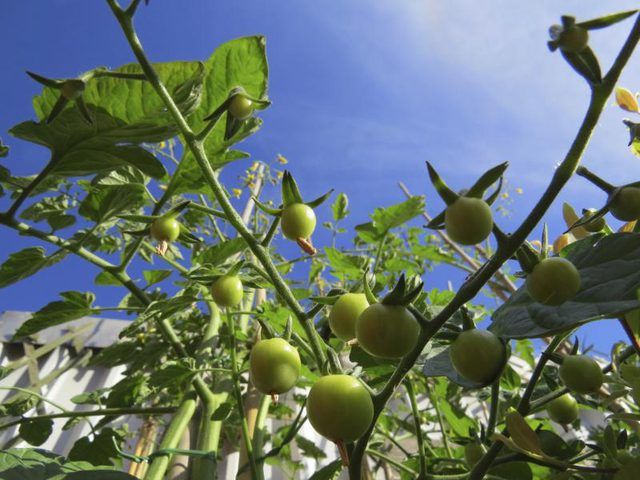Bulbs
Flower Basics
Flower Beds & Specialty Gardens
Flower Garden
Garden Furniture
Garden Gnomes
Garden Seeds
Garden Sheds
Garden Statues
Garden Tools & Supplies
Gardening Basics
Green & Organic
Groundcovers & Vines
Growing Annuals
Growing Basil
Growing Beans
Growing Berries
Growing Blueberries
Growing Cactus
Growing Corn
Growing Cotton
Growing Edibles
Growing Flowers
Growing Garlic
Growing Grapes
Growing Grass
Growing Herbs
Growing Jasmine
Growing Mint
Growing Mushrooms
Orchids
Growing Peanuts
Growing Perennials
Growing Plants
Growing Rosemary
Growing Roses
Growing Strawberries
Growing Sunflowers
Growing Thyme
Growing Tomatoes
Growing Tulips
Growing Vegetables
Herb Basics
Herb Garden
Indoor Growing
Landscaping Basics
Landscaping Patios
Landscaping Plants
Landscaping Shrubs
Landscaping Trees
Landscaping Walks & Pathways
Lawn Basics
Lawn Maintenance
Lawn Mowers
Lawn Ornaments
Lawn Planting
Lawn Tools
Outdoor Growing
Overall Landscape Planning
Pests, Weeds & Problems
Plant Basics
Rock Garden
Rose Garden
Shrubs
Soil
Specialty Gardens
Trees
Vegetable Garden
Yard Maintenance
How to Protect Tomato Plants from Freezing
How to Protect Tomato Plants from Freezing. Tomato plants (Lycopersicon esculentum) survive freezing temperatures with protection, but their growth and fruit production slow or stop. These perennial plants grow outdoors year-round in U.S. Department of Agriculture plant hardiness zones 10 through 11. In colder zones, protection from frost helps...

Tomato plants (Lycopersicon esculentum) survive freezing temperatures with protection, but their growth and fruit production slow or stop. These perennial plants grow outdoors year-round in U.S. Department of Agriculture plant hardiness zones 10 through 11. In colder zones, protection from frost helps extend their growing season. Cultural methods help tomato plants survive cold temperatures, and a range of covers also provide protection.
Freezing Temperatures
Temperatures near freezing, 32 degrees Fahrenheit, can damage tomato plants. Growing best at temperatures of 65 to 68 F at night and 70 to 75 F during the day, they slow fruit production when temperatures drop below 60 F. Some varieties have been specially bred to set fruit between 40 and 50 F.
Tomato plants are not frost-tolerant. Temperatures 40 F and lower damage tomato plants, causing soft, discolored leaves and stems, and decaying fruit. The plants sometimes recover from frost damage if the lower portion of their stems isn't affected.
Cultural Methods
Early harvesting and watering helps prevent tomato crops from freezing when winter approaches. Mature, green tomato fruits can ripen after they have been harvested. If frost is forecast, harvest the green tomato fruits that have stopped growing larger. Place the fruits in a single layer in a dark, airy place where temperatures don't fall below 55 F. Over time, the tomato fruits will turn red.
The air temperature above irrigated soil can be up to 5 degrees higher than above dry soil. Water the ground around tomato plants thoroughly in the evening when frost threatens. Spraying water over tomato plants during the coldest part of the night also may prevent the plants from freezing when the temperature is 30 to 32 F; if the temperature drops lower, however, the plants must be continually watered until the temperature rises above 32 F.
Covers and Water Tubes
Floating row covers and tubes filled with water protect tomato plants during frosts. Composed of spun polyolefin fabric, floating row covers offer protection from temperatures between 26 and 32 F and are barriers to insects. Spread floating row covers over hoops of wire, bamboo canes or other structures to prevent the covers from lying directly on the tomato plants. Old bedsheets, blankets, cardboard and other coverings also can be used, but, unlike row covers, they must be removed during the day to allow light to reach the plants.
Water tubes protect young tomato plants from freezing temperatures. The connected tubes filled with water stand vertically around the plants. Closing the tops of water tubes protects plants from temperatures as low as 20 F, but the tubes must be removed when the plants grow large and become crowded.
Plastic Tunnels and Winter Care
Low or high plastic tunnels provide long-term protection from cold temperatures for tomato plants. In areas with long cold seasons, hoops of wire, polyvinyl chloride or other durable materials covered in plastic 1 to 1.5 millimeters thick protect the plants from cold winds and heavy rain, and they provide some protection from freezing temperatures. In high tunnels, which are large enough to walk through, floating row covers give additional protection. On sunny days, these tunnels must be opened to prevent their interior temperatures from rising too high.
Tomato plant growth and fruiting slow during winter. Water the plants when the soil surface is dry, but don't overwater or else the ground will become soggy. Wait until the tomato plants' growth begins in spring before applying fertilizer.